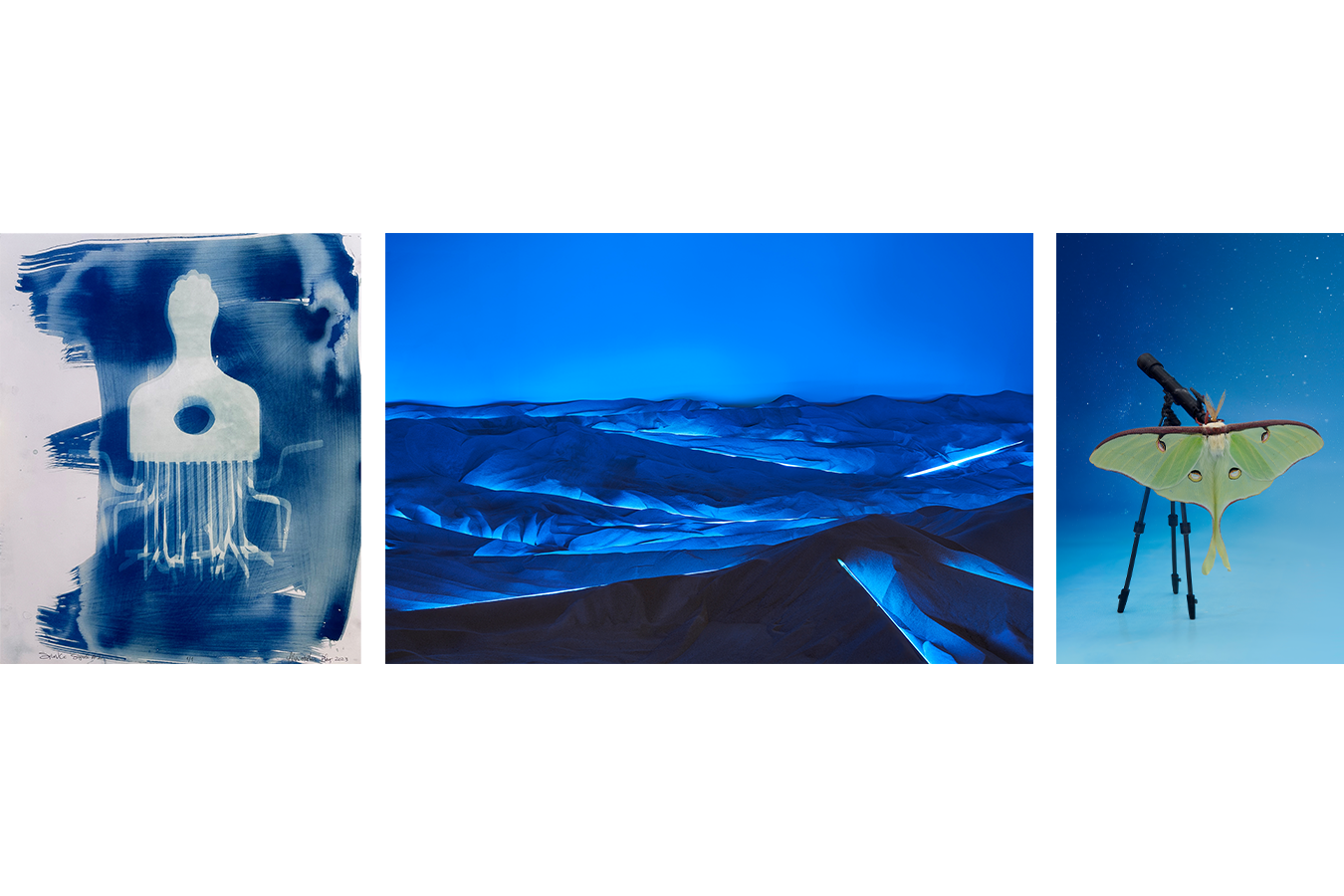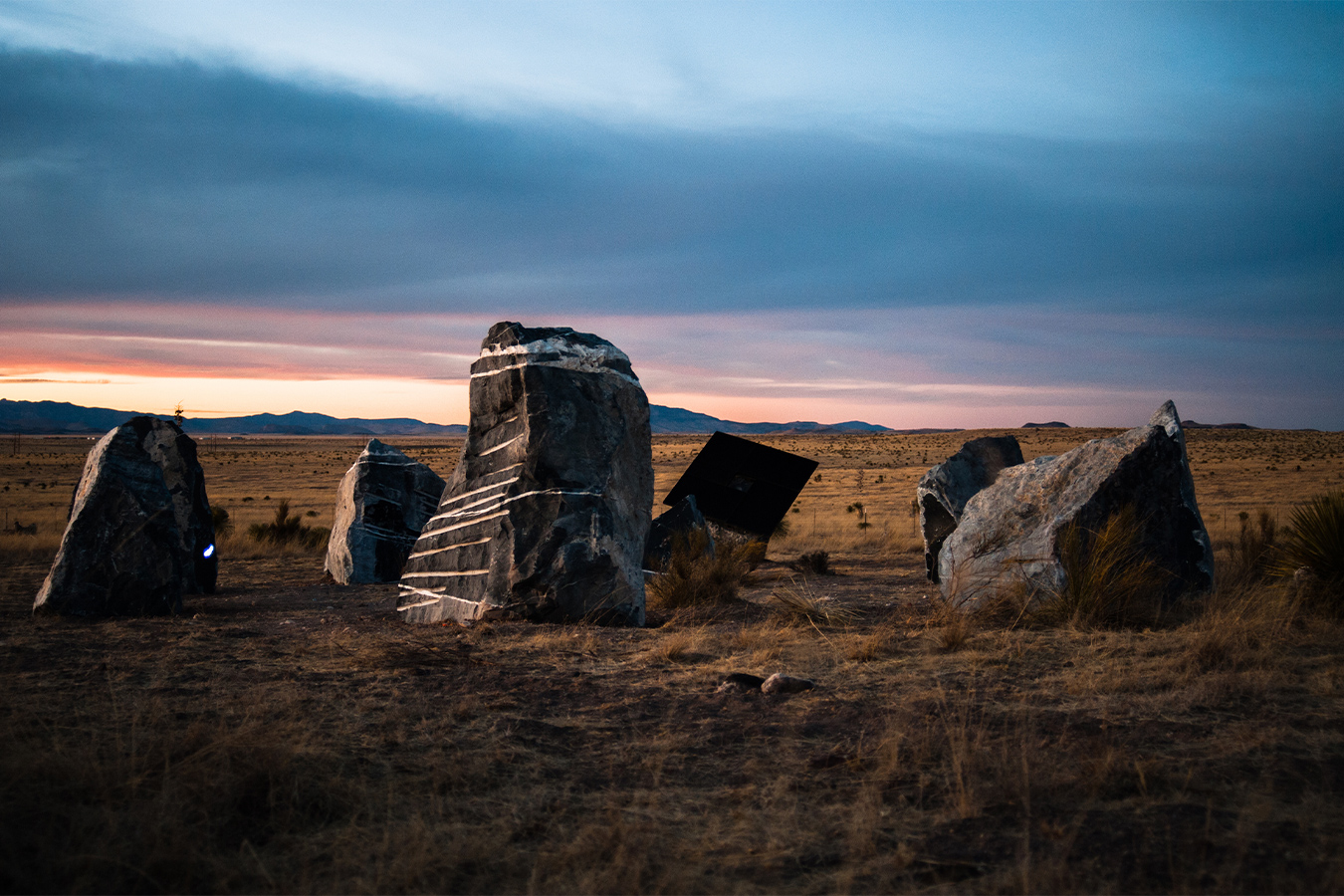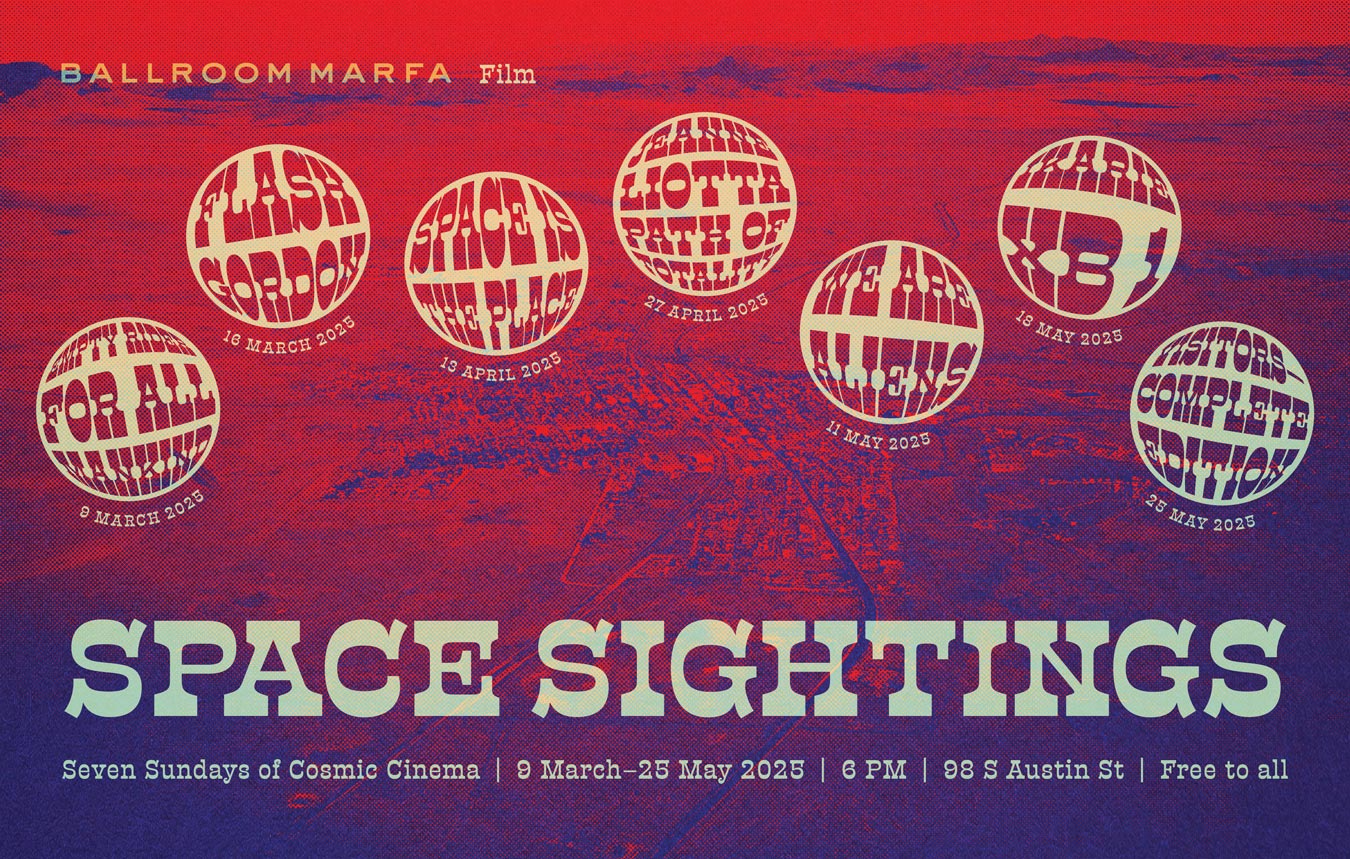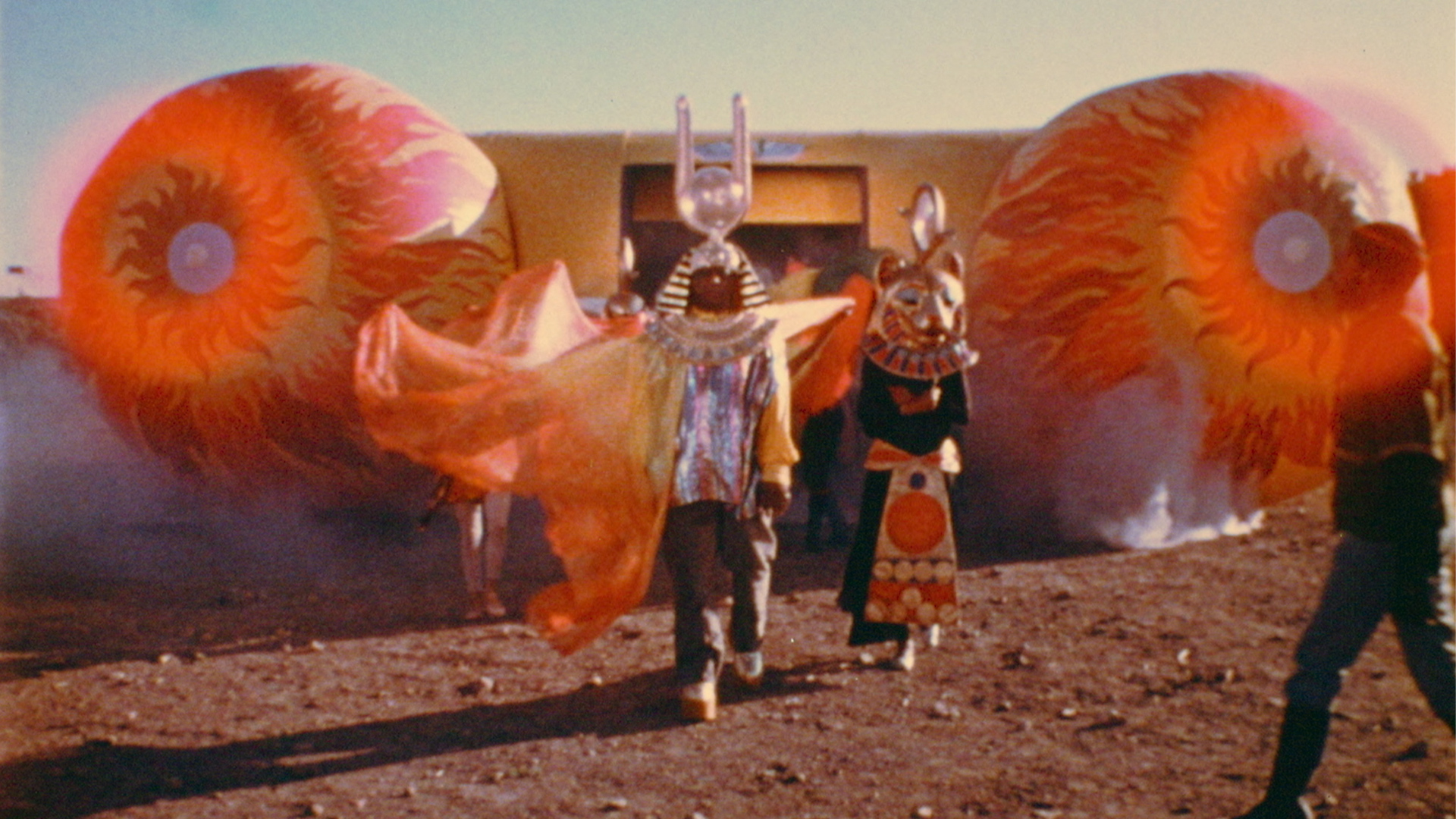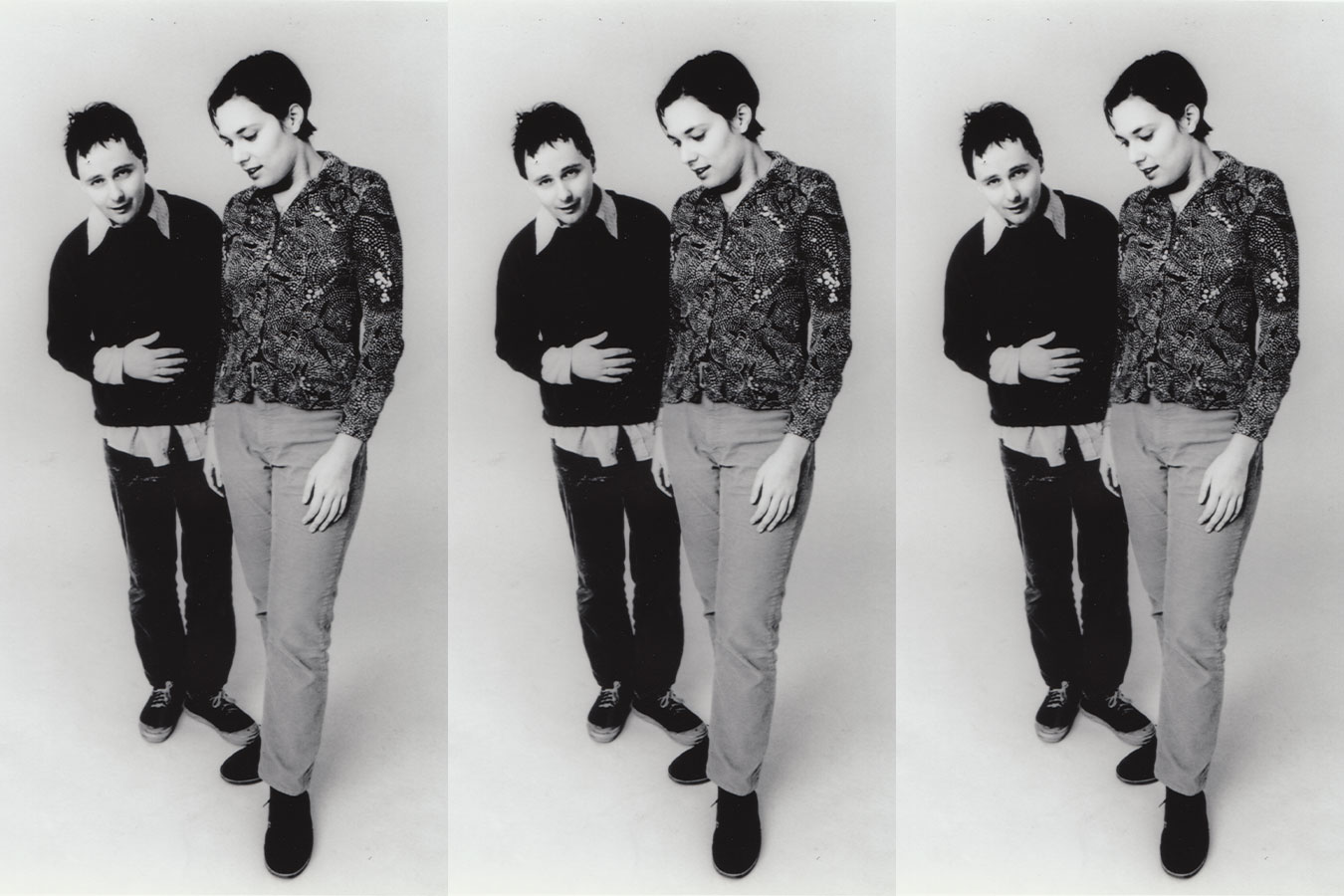Prada Marfa: An Explainer
September 27, 2013

James Evans
Prada Marfa, 2005
Digital photograph
40 x 50 inches (unframed)
Limited edition available from Ballroom Marfa
————————————————
Prada Marfa: An Explainer
What is Prada Marfa?
Prada Marfa is a site-specific, permanent land art project by artists Elmgreen & Dragset constructed in 2005. Modeled after a Prada boutique, the inaccessible interior of the structure includes luxury goods from Prada’s fall collection from that year. The door does not open, ensuring that the sculpture will never function as a place of commerce. Art Production Fund and Ballroom Marfa co-produced the project.
Prada Marfa is an artwork initiated by ourselves and realized in a collaboration with the not-for-profit cultural organizations Art Production Fund and Ballroom Marfa in 2005. It was not a work commissioned by the fashion brand Prada nor had the fashion brand any involvement in the creation of this work. They kindly gave us the permission to use their logo after we asked them, due to the founder Miuccia Prada’s personal interest in contemporary art, and she donated shoes and bags, which have never been renewed but stay the same – as a historic display – inside the sculpture. The right definition of advertisement must be based on criteria more accurate than just including any sign which contains a logo. It is advertisement only when a company either commissions someone to make such a sign, pays for its execution or makes a sign themselves in order to promote the company’s products. And this is not the case here since Prada Marfa never had any commercial link to the fashion brand Prada, unlike the Playboy bunny which went up this summer initiated by Playboy itself.
Prada Marfa is firmly positioned within a contemporary understanding of site specific art, but also draws strongly on pop art and land art – two art forms which were conceived and thrived especially in the USA from the 1960’s and onwards. Many artists, from Andy Warhol with his famous Campbell soup cans to Andreas Gursky with his grand photographic documentation of retail spaces have appropriated and dealt with the visual language of commercial brands. In an increasingly commercialized world, we see the independent artistic treatment of all visual signs and signifiers as crucial to a better and wider understanding of our day-to-day surroundings, including the influence of corporations.
It comes as a big surprise for us that the Texas Department of Transportation now after eight years may declare this well-known artwork to be illegal and we think it would be a shame for the local community if it disappeared after being there for so long since the work clearly is one of the strong points for the cultural tourism, which is such an important financial factor in this region. However, we are very happy to experience the fantastic support from both art professionals internationally, locals and others, who have even created a Facebook page named “Save Prada Marfa” that after just a short while has received almost 4000 likes and daily receives plenty of new posts, stories and images from people who once visited this site.
— Elmgreen & Dragset
————————————————-
Within our 13 years of producing and presenting important public art, few works have been as eagerly embraced than Prada Marfa by Elmgreen & Dragset. With full integrity, the artists refused for us to ask any corporation, especially Prada, for monetary donations to support the making of this project. It took us over a year of intense fundraising from local and international private patrons to realize this authentic and pure permanent artwork. The family of the late Walter Alton “Slim” Brown, even generously contributed to the project by lending their land. Great public art empowers people and gives them alternate ways to understand the times that we live in; Prada Marfa is a civic gift that has become one of the great worldwide pop icons.
– Yvonne Force Villareal & Doreen Remen
Co-founders
Art Production Fund
————————————————-
Prada Marfa is a living sculpture, an installation that has taken on a life of its own. In the eight years since its creation, Elmgreen & Dragset’s work has become part of the cultural and physical landscape of Far West Texas. At the same time it has entered into international art history discourse. It’s part of what people think of when they think of Marfa, either as art lovers on a pilgrimage, or as surprised passersby.
It’s also a non-profit project — supported entirely by funds from foundations and individuals — and the antithesis of commercialism. Prada Marfa is an embodiment of the Ballroom Marfa mission to combine innovation and accessibility without compromising on either front. We are encouraging engagement with art, and Prada Marfa is an important precursor to other public art projects in Marfa and Far West Texas.
– Fairfax Dorn
Co-founder and Artistic Director
Ballroom Marfa
Where is Prada Marfa?
Despite its name, the sculpture is not located in Marfa, but 37 miles northwest on highway 90 in Jeff Davis county, just outside of the town of Valentine, TX.
Who are Elmgreen & Dragset?
Working together since 1995 and drawing from disciplines as varied as institutional critique, social politics, performance and architecture, Michael Elmgreen and Ingar Dragset’s interdisciplinary practice reconfigures the familiar with characteristic wit and subversive humor. The static, staged environments they have presented across the world question our expectations by enacting paradoxical, seemingly misplaced scenarios that challenge our habitual notions, often to surprising or shocking effect. As a result, throughout their collaborative artistic partnership, Elmgreen & Dragset, from Denmark and Norway respectively, have redefined the way in which art is presented and experienced. See below for their official bio.
Who are Ballroom Marfa and Art Production Fund?
Art Production Fund (APF) is a 501(c)3 non-profit organization dedicated to commissioning and producing ambitious public art projects, reaching new audiences and expanding awareness through contemporary art. It aims to provide artists with the necessary production assistance for complex, difficult-to-realize projects, often of a multidisciplinary nature. It was founded by Yvonne Force Villareal and Doreen Remen in 2000. Recent notable APF projects include Yvette Mattern’s Global Rainbow in response to Hurricane Sandy, NYC (2012); Yoko Ono’s Imagine Peace in Times Square, NYC (2012); and Josephine Meckseper’s Manhattan Oil Project, NYC (2012).
Founded in 2003 by Virginia Lebermann and Fairfax Dorn, Ballroom Marfa is a 501(c)3 non-profit cultural arts organization in Far West Texas. Ballroom Marfa’s mission is to serve international, national, regional, and local arts communities and support the work of both emerging and recognized artists working in all media. Ballroom Marfa has worked with over 200 artists, produced 28 internationally-recognized exhibitions and hosted over 100 music concerts.
Prada Marfa is a marquee undertaking for both organizations, as it represents their shared interest in supporting projects outside of traditional gallery or museum environments.
Who is Boyd Elder?
Boyd Elder is the photogenic caretaker and site representative of Prada Marfa, making appearances to individual travelers as well as a national audience in 60 Minutes’ profile of the sculpture. He is a lifelong resident of Valentine and a Big Bend legend, his name coming up alongside Mick Jagger, The Eagles and Joni Mitchell. He has his own line of Southwestern-themed leather gear, and makes paintings on horse and cattle skulls.
Is Prada Marfa a store?
No. There is no public access to the interior of the structure, and nothing is for sale.
As Michael Elmgreen said in a recent interview with Texas Monthly, “[Prada Marfa] was meant as a critique of the luxury goods industry, to put a shop in the middle of the desert.”
Anyone is welcome to take a picture, and it seems like almost everyone does — from Beyoncé to the scores of amateur photographers you’ll find using the #PradaMarfa hashtag. Snapshots are free, unless you would like to collect the limited edition print from photographer James Evans, currently available from Ballroom Marfa.
Is Prada Marfa an advertisement for Prada?
No. It is a non-profit public art project that was conceived of by Elmgreen & Dragset, who declined any monetary support from Prada or any other corporation.
As an art lover, Miuccia Prada, founder of the museum spaces of Fondazione Prada, did give the artists the right to use the Prada logo, even though she knew it was intended as subversive of commodification and the very brand itself.
“There’s a difference between being commissioned by a company to do something for them and using their logo, and using their logo on your own,” Elmgreen told Texas Monthly.
Why is there any maintenance of Prada Marfa? Isn’t it supposed to become a ruin?
When Elmgreen & Dragset erected Prada Marfa in 2005, they, along with the producers Art Production Fund and Ballroom Marfa, proposed that the public art project would exist at the mercy of the elements and visitors. As Art Production Fund’s Yvonne Force Villareal told the New York Times before its opening, “We loved the idea of the piece being born on Oct. 1 and that it will never again be maintained. If someone spray-paints graffiti or a cowboy decides to use it as target practice or maybe a mouse or a muskrat makes a home in it, 50 years from now it will be a ruin that is a reflection of the time it was made.”
The reality of leaving Prada Marfa completely untouched is a complicated and multifaceted issue. The site is far from pristine, as visitors will already know; however, all parties realized that if the structure were allowed to fully decay, it would become both a hazard and an eyesore. With the blessing of Elmgreen & Dragset, the work’s original plan was modified shortly after it was constructed in 2005. Since it is a public installation, Art Production Fund and Ballroom Marfa are required by law to perform a certain level of repairs in the interest of safety. And out of respect to the residents of Valentine, we paint over graffiti and clean up trash at the site as needed. Performing this minimal maintenance remains true to the spirit of Elmgreen & Dragset’s original proposal, and it also allows us to keep the installation accessible to the public.
In addition to our efforts to maintain the site, we organize semi-annual cleanups of the mile-long stretch of US Highway 90 adjacent to Prada Marfa as part of the Texas Department of Transportation’s Adopt-a-Highway program. As we saw in the aftermath of the 2014 site defacement, residents of Valentine also voluntarily removed detritus left behind by visitors in an effort to protect the site.
While we invite commentary, critique, and interaction with the site, the recent aggressive act of vandalism resulted in significant damage and leaves little room for further engagement about its intention. The large-scale defacement of the structure overwhelms this forum and shuts down dialogue. We do not endorse the defacement of Prada Marfa, as it limits this thoughtful public discourse.
UPDATE 3/17/2014: Is the Texas Department of Transportation (TxDOT) trying to remove Prada Marfa?
As of March 2014 we are currently in productive talks with TxDOT and are close to resolving the issues around Prada Marfa. Look for an official announcement in the coming weeks.
UPDATE 9/12/2014
From TxDOT:
As of February 1, 2014, the Ballroom Marfa Foundation, a domestic nonprofit corporation, has leased the property on which the building stands. The site is now an art museum site and the building is their single art exhibit. As such, associated signage on the building is now considered to be an “on-premise” sign under state rules and does not require a state permit under the Highway Beautification Act.
The lease is currently being reviewed, but with the execution of the lease, the complaint file will be closed.
What does this have to do with Playboy Marfa?
Ballroom Marfa and Art Production Fund are not involved with Playboy Marfa, an installation outside of Marfa, Texas by the artist Richard Phillips. Playboy Marfa was commissioned by Landis Smithers and Neville Wakefield, Playboy’s Creative Director of Special Projects. Wakefield also curated Autobody, an unrelated exhibition at Ballroom Marfa in 2012.
Following much controversy and a complaint by Lineaus Hooper Lorette, a local accountant and artist, TxDOT “ordered the property owner to remove this sign because the owner does not have a Texas License for Outdoor Advertising and a specific permit application for the sign was not submitted.”
After further discussion with Plaboy’s legal team, Veronica Beyer, TxDOT Director of Media Relations, told the Big Bend Sentinel in August that “the order of removal issued to the landowner has been rescinded, and TxDOT is having discussions with Playboy Enterprises to find a solution to this issue.”
No doubt the deeper critical ramifications of this question are being pondered by art historians, enthusiasts and MFA thesis writers at this very moment, as well as by Playboy counsel Dick DeGuerin. Dick’s a good friend of Ballroom, but is not officially involved with Prada Marfa.
How can I help?
Your membership with Ballroom Marfa will help us continue to commission art installations and to maximize access to visual art, film, music and performance by hosting free and low cost events — from community dinners and our annual DJ Camp to musical performance and large scale sculptural installations like Prada Marfa — out here in the high desert grasslands of the Big Bend region of Far West Texas.
We appreciate any and all support as we consider the future of this historic work of land art and iconic roadside attraction.
We rely on patrons, collectors, donors and fans from around the world so that we can continue to operate an internationally-recognized cultural arts center in this sparsely populated landscape. We will continue to share Marfa with the world, and in turn bring the most inspiring visual art, music, film and performance to this remote corner of Texas.
Click here and join Ballroom Marfa today!
————————————————
Michael Elmgreen (born 1961 in Copenhagen, Denmark) and Ingar Dragset (born 1969 in Trondheim, Norway), based in Berlin and London, have worked together as an artist duo since 1995. They have held numerous solo exhibitions in art institutions worldwide, including the Museum Boijmans van Beuningen in Rotterdam (2011), ZKM Museum of Modern Art in Karlsruhe (2010), MUSAC in Léon (2009), The Power Plant in Toronto (2006), Serpentine Gallery (2006) and Tate Modern (2004) in London, and Kunsthalle Zürich (2001). Their work has been included in the Liverpool (2012), Singapore (2011), Moscow (2011, 2007), Gwangju (2002), São Paulo (2002), Istanbul (2013, 2001), and Berlin (1998) biennials, and in 2009 they received a special mention for their exhibition “The Collectors” in the Nordic and Danish Pavilions at the 53rd Venice Biennale. Amongst their most well known works are “Prada Marfa” (2005) – a full scale replica of a Prada boutique in the middle of the Texan desert, and “Short Cut” (2003) – a car and a caravan breaking through the ground which was first shown in Milan and now resides in the collection of the Museum of Contemporary Art, Chicago. Recent projects include the permanent public sculpture “Han” in Elsinore, Denmark (2012) and the theatrical play “Happy Days in the Art World”, which debuted at the Performa 11 biennial in New York (2011) and was subsequently performed at the Bergen International Festival and the Royal Danish Theatre in Copenhagen (both 2012). Their winning Fourth Plinth Commission “Powerless Structures, Fig. 101” – depicting a child astride his rocking horse – was on view in 2012–2013 in Trafalgar Square, London and they recently curated an extensive public art program in Munich entitled “A Space Called Public / Hoffentlich Öffentlich” (2013). Their solo exhibition “Tomorrow”, a major site-specific installation in the former textile galleries of the Victoria & Albert Museum in London, is currently on view until January 2014. Upcoming solo exhibitions by Elmgreen & Dragset will take place at the Astrup Fearnley Museet, Oslo (March 2014), PLATEAU, Seoul (summer 2014), and Statens Museum for Kunst, Copenhagen (autumn 2014).
